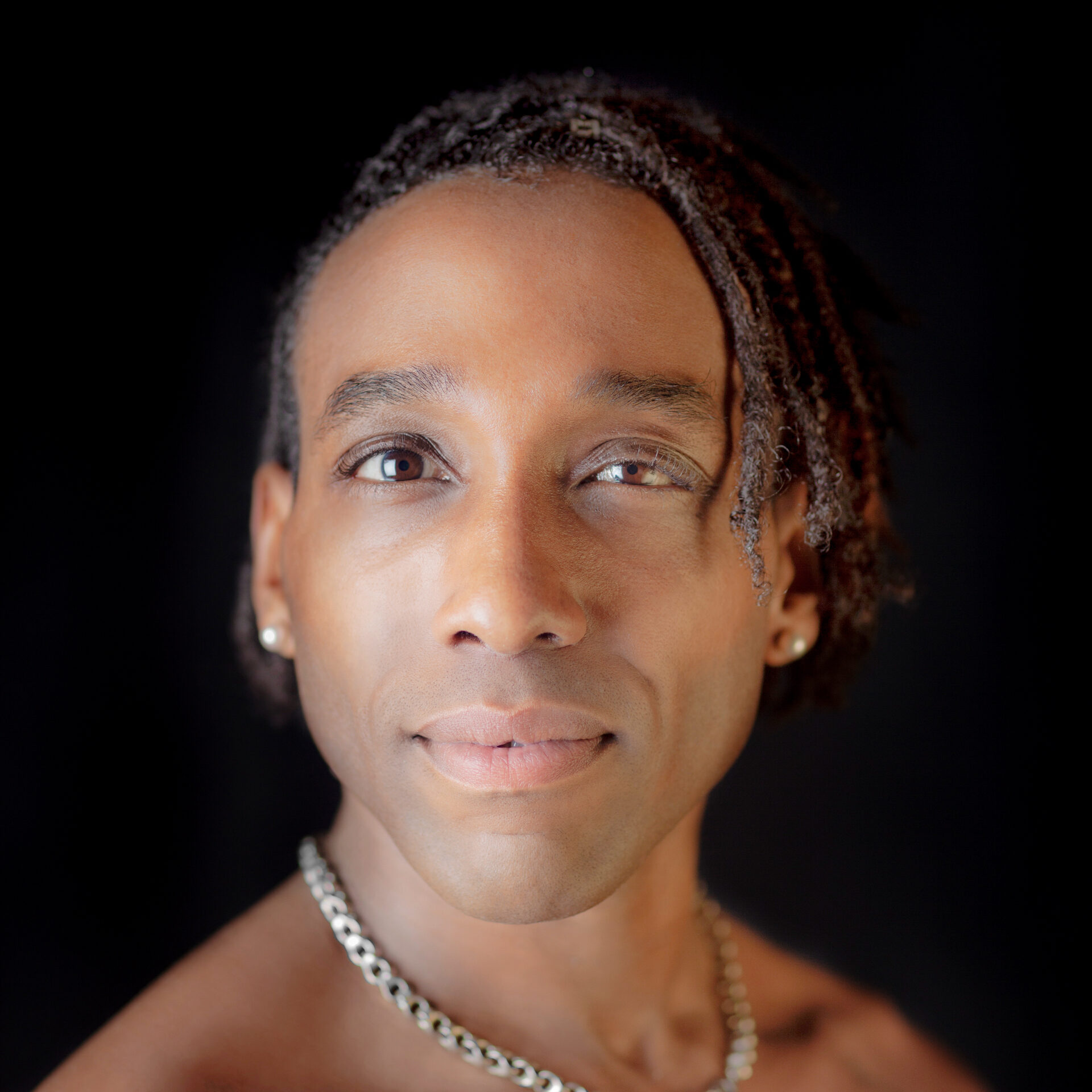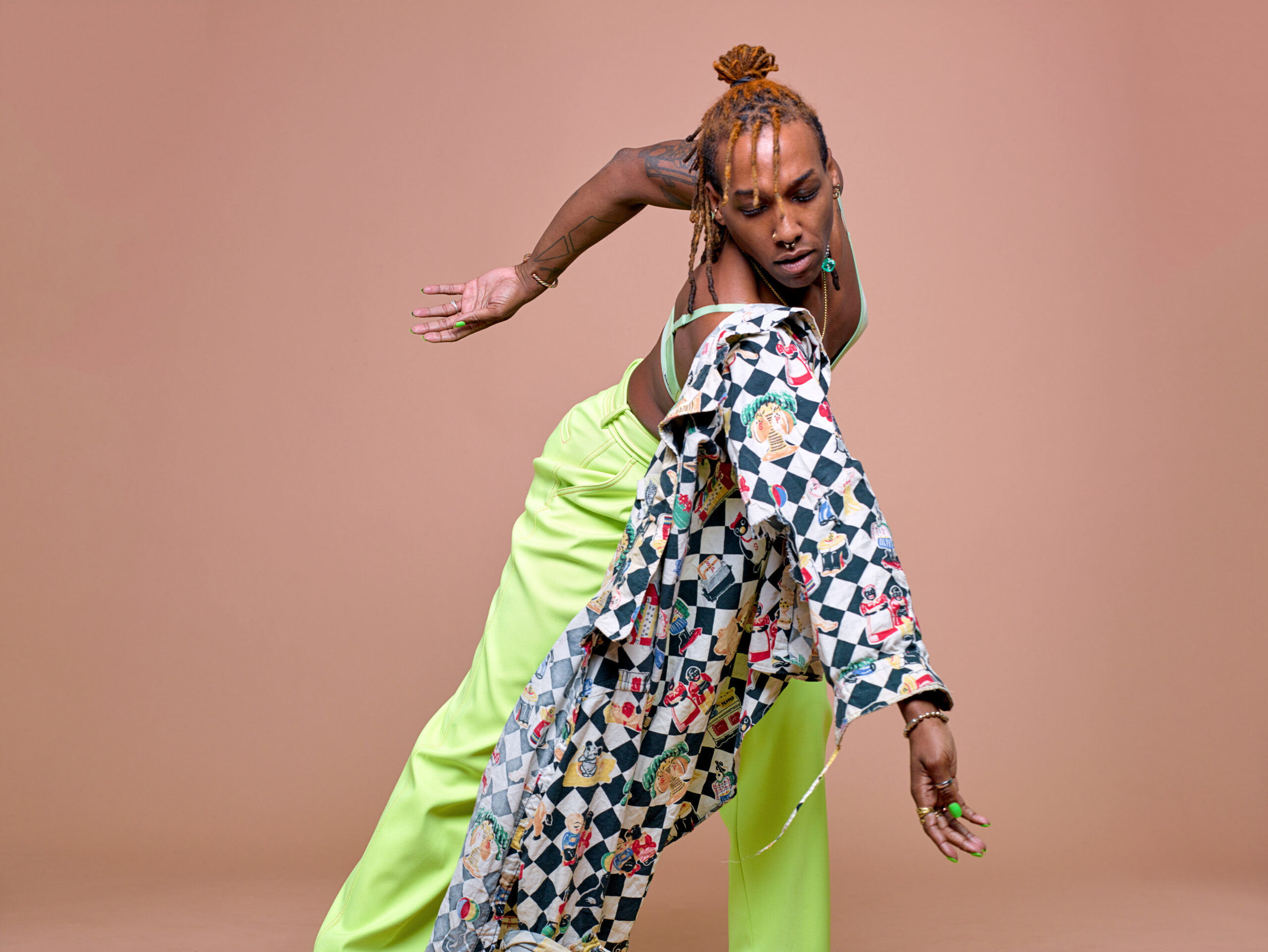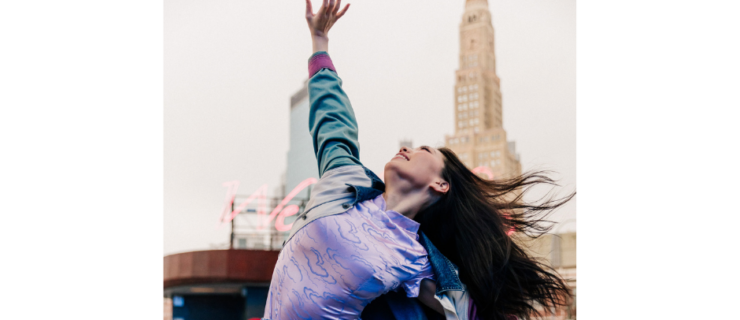Honoring the “Beautiful Revolution” of a Transgender Nonbinary Dancer’s Body
It’s no new concept to consider the moving body in space. At its core, that is what dancers do: Make this shape with my body in this space, this studio, this stage, while being intrinsically connected to who is viewing the movement and how they’ll receive it. Pile on the considerations of a Black body in space, with all of its so-called physical implications, whether craved, feared or misunderstood. On top of that, the considerations of gender or, better yet, the absence of the binary. What is it to be a mover void of such specific assignments?
Dance has long been used to explore concepts of revolution amongst communities. Maybe more than ever now. But what about the revolution within the body? What riots have turned over stones in the spirit?
Over the last few years, my experience as a transgender nonbinary person has been quite a tumultuous and beautiful revolution within my body. It’s been a confusing and quiet eruption, but I’m so immersed in myself, in love with myself and learning to trust in myself in ways I didn’t believe were possible.
Amongst the wide variety of opportunities I have had as a professional dancer, a great deal of that time has been spent as a member of A.I.M by Kyle Abraham. I joined the company in 2011, first working on Pavement in a role that was given to me specifically because I presented male. With a cast of six men and one woman, the piece examines the roles of male and female within an urban environment. Knowing how to move “male” and feeling like I had something to prove—both as a new company member and someone only six years into studying dance as a profession—was useful in this work. But thinking I had to move this way to be seen was reductive to me as a person. Undergoing this exploration through an artistic lens was cathartic and also a turning point for me outside of the studio. Until recently, I had not known any Black trans modern dancers—I had not known it to be possible. But I began to feel my otherness. I started to feel a disconnect with male-specific roles, and, through my distaste, I explored them and portrayed them onstage. After all, I still wanted to prove that I was talented and worthy to be in the room. I’m complex, smart and capable.
Several years into dancing with A.I.M, I was feeling safe and seen. Safe enough to explore the other parts of me that maybe didn’t fit gender norms or expectations. I let go of other parts as I kept an openness to change and exploration in the studio. I stopped telling myself what I had to do and got used to asking myself how it all made me feel. The subject matter of the work and the self-exploration involved in performing it made space for me to continue finding myself. To bring what I felt on the inside out, I got comfortable being perceived in more complex and honest ways. I stopped giving the extra drip to my walk and puff of my chest to present more masculine. I began to let my intricacies show. To dance in the nonbinary. To use all that I know to be a better me, and a better performer. Learning more body language and laying old ones to rest that were no longer serving me.

In 2019, when we revisited a duet from Dearest Home created between Tamisha Guy and myself, I found myself reexamining my original role. In my eyes, the duet centered around power dynamics within a couple. Tamisha and I gesticulated and swooped around the stage in silent power, exchanging side glances. These knowing looks informed some history between the man and woman, finally erupting into a moment of competition where the choreography involved me removing my shirt—leaving me bare-chested—and Tamisha following suit, stripping down to a sports bra, as if to say, “It’s nothing. What next?”
When it came time to perform this again, my chest had grown, and I felt this moment would reframe the entire duet in an unintended way. Not that it was specifically unwanted, but I knew from how the characters were developed that this would be new and poignant information that had never been a part of the piece. I spoke with Kyle and Tamisha and ultimately said that I didn’t think it would serve the work for me to perform the role. Outside of my discomfort with baring my new chest to a large audience, I felt that, with the limited time we had to rehearse, it was smarter to have another dancer perform the role in its original iteration. Kyle’s support for me and my journey remains unwavering, and he even mentioned that, if we’d had more time to remount the duet, he could and would have reworked it to fit me now. I can’t help but wonder if other directors or choreographers would be as considerate when working with nonbinary dancers.
I am now entering my fourth year of gender-affirming hormone therapy, and my body has shifted significantly. I am learning to move all over again—it is glorious! It is hard. In some ways, dancemakers and teachers of adolescents can understand this shift, as it may resemble a puberty of sorts, but what does it mean for a professional, an adult? I have a previously established box of tools to move my body, and not all of them serve this shift. My center of gravity feels differently placed. My hips feel heavier. My upper-body strength feels less than before. All that fun floorwork? It’s a lot harder now! It’s been an interesting time relating to my moving body.
One thing I have learned, though, is to step into every day with grace. Allow the shifts and changes to be, and stay open to the newness and differences I encounter.
I’ve come so far from my early days of running the “pavement.” I am so honored to be on this journey. It has been one of fight and exploration. Fight with my own expectations and others’, fight with what I know versus what I’m willing to learn. Fighting depressive thoughts. Depression rooted in knowing the politics of my body in any space, in any form.
Every day I am working to honor my current state. Whether sad or sore or dysmorphic, in my view, it is valid. Still in process with A.I.M, I am exploring trans nonbinary roles in the work. Abstractly, I explore my nonbinary superhero in Requiem: Fire in the Air of the Earth. And in An Untitled Love, I’m essentially exploring my queer and trans ancestors, my friends and myself within the Black community. It feels so righteous and freeing to put what I hadn’t had the chance to witness out there for others to see and feel.
Stay with grace.




